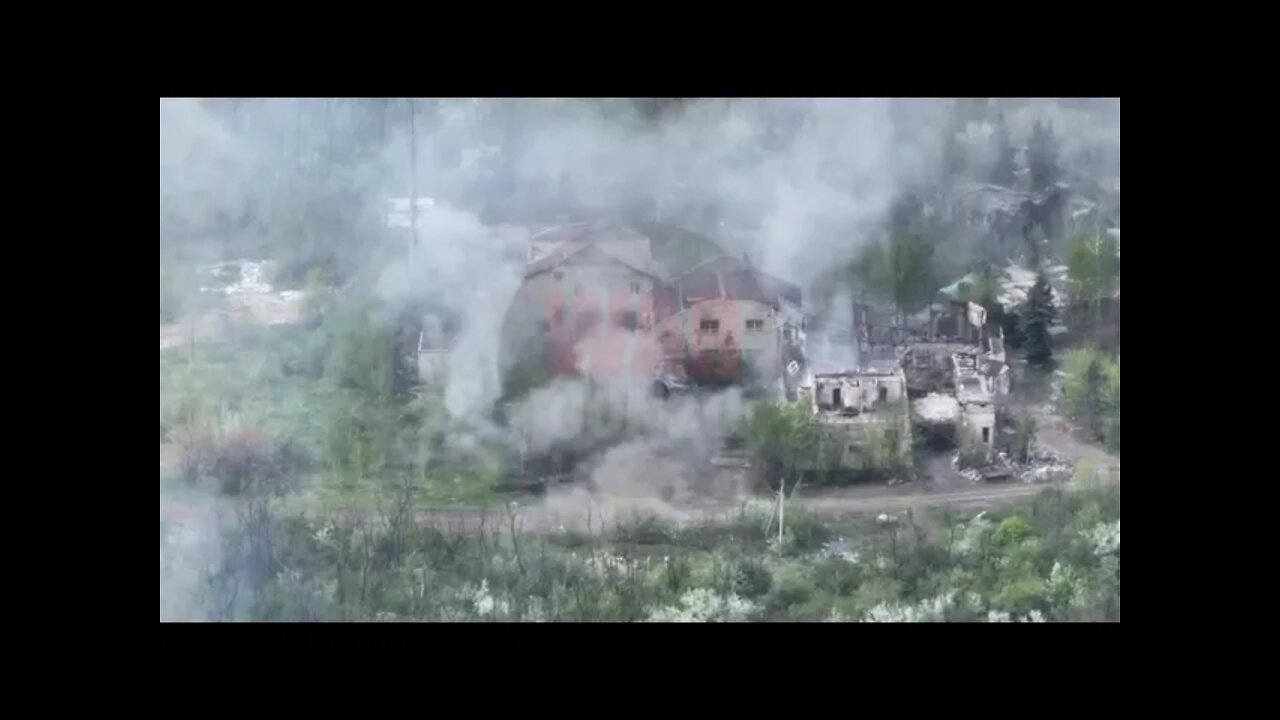Premium Only Content

D-30 122mm Of Battalion Sparta Hit Ukrainian Positions Of The 25th Brigade Near Avdiivka
🇷🇺🇺🇦D-30 of battalion Sparta hit the positions of the 25th Brigade of the Armed Forces of Ukraine near Avdiivka
D-30 122 mm howitzer Artillery System Information 👇
Distinctive features of the D-30 include its low mobile mounting and above-barrel recoil system.
The three-legged mobile mount is unusual for field artillery, with stabilizers that are clamped together for towing and deployed when in action.
A large tow linkage is fixed to the muzzle; in transport the barrel serves as a trail.
Similar mounts were a feature of several 76-mm pre-war (1931–1935) universal (both field and anti-aircraft) guns designed by Leningrad's Kirov Plant (L-1, L-2 and L-3).
Other examples were the 1939 French 47SA39 APX, and 1943 German 105-mm light field howitzers designs by Skoda and Krupp; neither entered service.
The Bofors 105 mm L28 Light Field Howitzer 4140 was similarly arranged with four legs and did enter Swedish service.
The 1930s-designed British 2-pdr. anti-tank gun was another piece featuring a three-legged mounting.
Compared to the M-30, the new howitzer had a significantly longer 35 calibre gun barrel, just short of being a gun-howitzer by Soviet definition.
Like other guns of the period, it had a high efficiency muzzle brake; this improved muzzle velocity by 175 m/s to a total of 650 m/s for HE, and raised maximum range by 3,500 m beyond the similar M-30.
Maximum range was 2 km better than the 76 mm M1942 at 15.3 km.
Weight increased by 650 kg over the M-30, to 3,150 kg; the D-30 is over twice the weight of the 76mm M1942.
Accuracy improved, with mean error at about 10 km dropping from 35 m with the M-30 to just 21 m.
Effective stabilisation length is a fundamental aspect of a gun mount, and legs 120° apart need to be longer than those with a smaller angle.
The D-30's design minimises this problem in several ways.
Yrunnions are close to the ground, as a result of placing the recoil system and cradle above the barrel.
The trunnions are also at the very rear of the breech; this maximises the recoil space when firing at higher elevation angles.
Their rearward position also pushes the recoiling element forward on the mount, maximizing relative rearward span of the stabilizers and so stability during recoil.
Additionally there is a very efficient muzzle brake, which absorbs about half the recoil.
There is no mechanism to reduce recoil length as the angle of elevation increases.
Some of the design decisions have a price.
The muzzle brake produces about twice the overpressure in the area around the gun that is acceptable to Western armies, and is the reason it is often seen being fired with a long lanyard, which reduces rate of fire.
Furthermore, the maximum elevation angle is restricted to 18° (early versions) or 22° (later versions) when the breech is over a trail leg.
This is enforced by a mechanical cam that prevents the piece firing for about 60% of the total top traverse, and limits range to about 12 km, with full maximum range only possible in the central arc of about 48° between each pair of legs.
The extreme rearward location of the trunnions means the elevating mass is unbalanced, requiring a strong balancing mechanism to enable manual elevation.
To do this, the D-30 uses compression balancing gears.
A central jack is powered by hand-operated hydraulics.
This jack is lowered while the wheels are raised to permit two of the stabiliser legs to be swung 120° rearwards.
The mounting is then lowered and the ends of the legs spiked to the ground.
This mounting provides for quick traversing to fire in any direction.
The pair of large tires are suspended on a single trailing arm; maximum towing speed is 60 km/h on the road.
As was normal in Soviet designs, the tyres were filled with foam.
Initially, the D-30 had no brakes and no seat for the layer—non-essential luxuries.
A sliding block breech was adopted instead of the M-30's pre-1914 screw pattern, giving a slight increase in the rate of fire.
It is a semi-automatic vertical sliding block breech, with a tied jaw; the block moves down to open and opens automatically ejecting the empty cartridge case as the recuperator forces the gun tube back into battery after a round is fired.
The design is closely related to those of breeches on other Soviet post–World War II guns and howitzers.
The non-reciprocating sights are standard Soviet pattern, designed for one-man laying.
Included are a direct fire anti-tank telescope, a panoramic periscopic indirect-fire sight (dial sight) in a reciprocating mounting, an angle of sight scale, and a range drum for each charge engraved with the range (distance) scale.
The elevation leveling bubble is mounted on the dial sight mount.
The range drum enables the standard Soviet technique of semi-direct fire when the piece is laid visually on the target and the range set on the range drum.
-
 LIVE
LIVE
Sean Unpaved
1 hour agoThursday Night Thrills & Kawhi's No-Show Gig in LA
134 watching -
 43:58
43:58
Members Club
55 minutes agoTrump Death Hoax, Labor Day Fashion, and the Year of the Cursed CEO - MC08
-
 LIVE
LIVE
StoneMountain64
1 hour agoTOP GHILLIE SNIPERS play Warzone's NEW UPDATE
50 watching -
 LIVE
LIVE
Reidboyy
1 hour agoHow To Make $$$ in Delta Force Console Operations!
36 watching -
 1:00:35
1:00:35
Timcast
2 hours agoDOJ To BAN Transgenders From Owning Guns
101K116 -
 LIVE
LIVE
Side Scrollers Podcast
3 hours agoUK JAILS TV WRITER FOR WRONG THINK + TWITCH ALLOWS CYBERSTALKING + MORE | SIDE SCROLLERS LIVE
296 watching -
 LIVE
LIVE
Viss
2 hours ago🔴LIVE - PUBG Solo Tactics To Win Consistently! - PUBG 101
84 watching -
 2:05:54
2:05:54
Steven Crowder
4 hours agoLive Reaction: RFK Faces Senate Grilling After Employees Demand His Resignation
261K216 -
 1:02:58
1:02:58
The Rubin Report
3 hours agoPress Stunned by Trump’s Brutally Honest Message for Elon Musk
46.7K44 -
 LIVE
LIVE
Rebel News
1 hour agoPolice chief says 'comply' with intruders, Carney on temp workers, Trump on tariffs | Rebel Roundup
351 watching